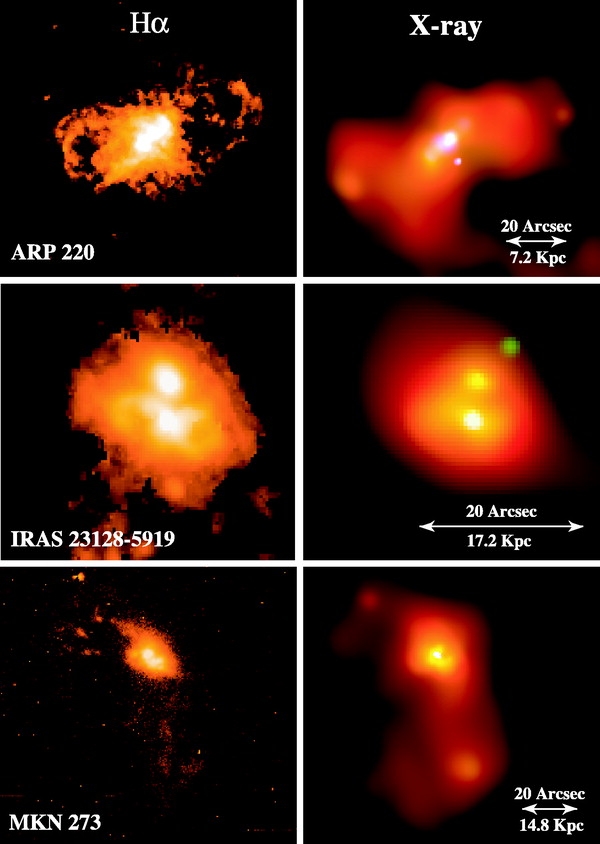
 Credit: J. P. Grimes , T. Heckman , D. Strickland , and A. Ptak, 2005,
The Astrophysical Journal, Vol. 628, pp. 187-204
Credit: J. P. Grimes , T. Heckman , D. Strickland , and A. Ptak, 2005,
The Astrophysical Journal, Vol. 628, pp. 187-204
Blowing Off Steam
Stars form from large clouds of gas and dust in galaxies. Typically the rates of star formation are rather low, but in some cases large numbers of stars form in a relatively short amount of (galactic) time. Such "starbursts" may be produced by the collision of one galaxy with a neighbor. After a starburst occurs, the host galaxy is never the same: massive stars formed in the burst drive strong winds which reshape the galaxy, and eventually explode, producing shock waves which can rip right through the galactic disk. The image above shows a sample of galaxies in which starbursts have occurred. The left side shows emission from hydrogen in the optical, while the right side shows X-ray emission from hot diffuse gas in the galaxy as seen by the Chandra X-ray Observatory. The optical and X-ray emission help astronomers understand the process by which the violence of the starburst blows through the galaxy, and helps spread complex atoms into intergalactic space.
Last Week *
HEA Dictionary * Archive
* Search HEAPOW
* Education
Each week the HEASARC
brings you new, exciting and beautiful images from X-ray and Gamma ray
astronomy. Check back each week and be sure to check out the HEAPOW archive!
Page Author: Dr. Michael F. Corcoran
Last modified Tuesday, 27-Feb-2024 10:06:54 EST


